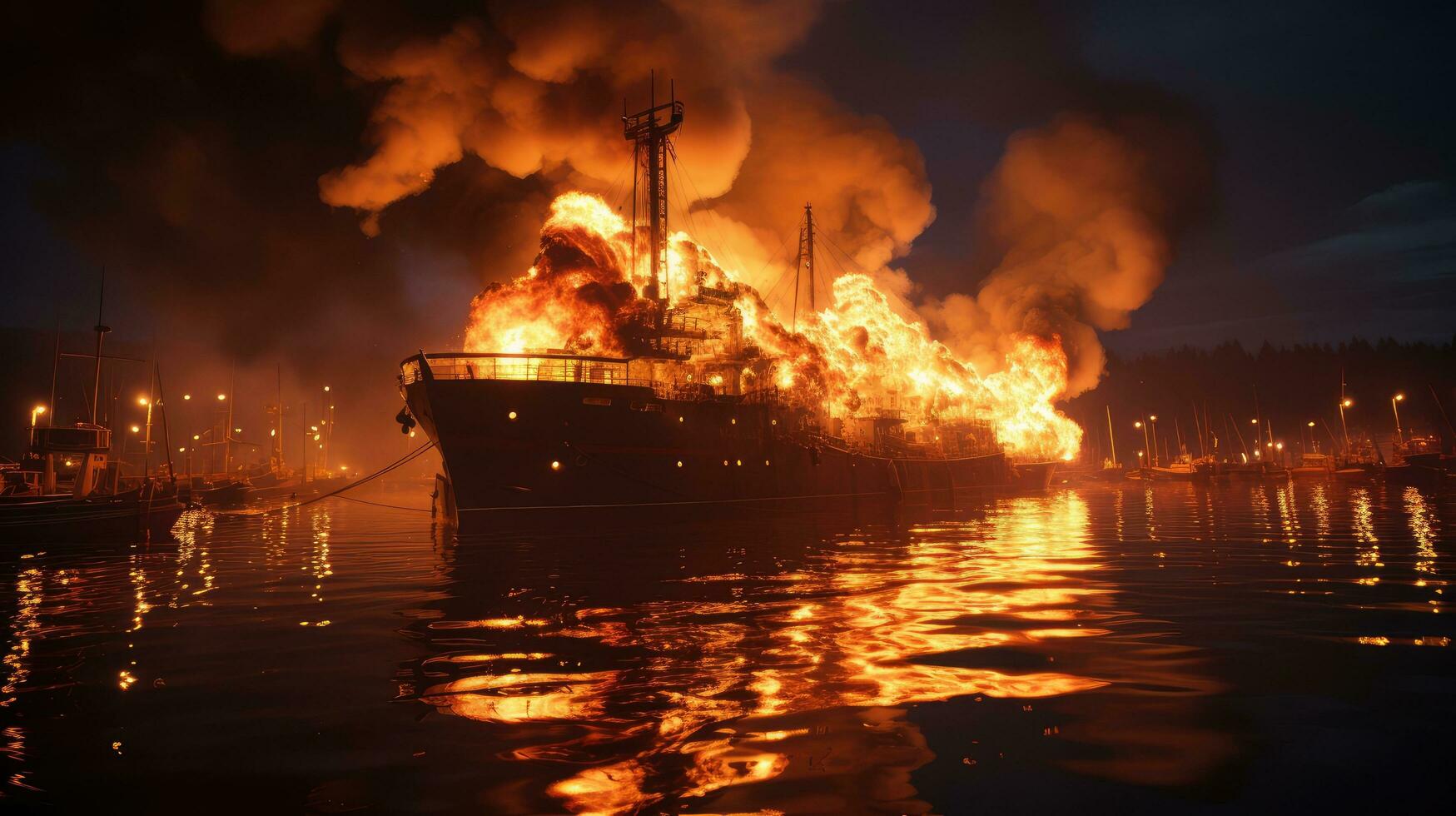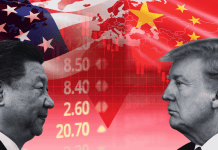Navigation of commercial vessels across the Red Sea to the Suez Canal and onwards to Europe has come under the missile attacks of Iran-supported Houthi rebels.
US Navy’s 4,000 Rounds-A-Minute Phalanx Gun Shoots Down Houthi Missile That Breached Aegis Radar
They are challenging safe navigation through the vital international waterway to express solidarity with Hamas against Israel in the ongoing war. They argue that they will not allow shipping companies to carry Israeli cargo to and from Israel to other destinations.
In a way, they want to impose a blockade of Israel just because the Houthis are strategically located at the mouth of the Red Sea.
In a way, it is an indirect challenge to the US and Saudi Arabia as well. Yemen is embroiled in an inter-factional war in which the Shia population of Northern Yemen, armed and supported by Iran as its proxy, succeeded in capturing Sana’a, the capital city, and ousting the former Sunni ruler, who sought safety in Saudi Arabia.
At one time, the Houthi rebels made a missile attack on the oil installations in the Saudi kingdom. The Houthis are also pitted against the US for the reasons that firstly, it is an adversary of Iran and staunch supporter of Israel, and secondly, the US and Saudi are allies in the region.
Escalation Of Hostilities
At the end of the New Delhi G-20 summit, India, Saudi Arabia, Israel, and the United States announced the ambitious plan of opening a new sea-land connectivity from the Indian western port of Kandla through the Arabian Sea to Saudi Arabia – Haifa in Israel –the Mediterranean and then to Europe.
Iran took it as an affront because the plan excluded Iran from the connectivity map and provided facilities to Saudi and Israel.
Days before October 7, 2023, the day when Hamas attacked the border town of Israel, killing over 1200 innocent and unarmed Israeli citizens and taking about 240 Israelis (men, women, and children) as captives, the US was planning a meeting between the Saudi and Israeli authorities to forge conciliation between the Saudi Kingdom and Tel Aviv.
This angered Iran because Tehran considered the developments detrimental to its influence and status in the region. Moreover, Iran is uncomfortable with the sanctions imposed on her and also the restrictions on her nuclear program.
Retaliation
The Houthi rebel group has been attacking merchant ships, which has prompted the US and UK to take retaliatory strikes.
The most recent attack on a laden tanker suggests things are getting worse, and not better,” said Anoop Singh, global head of shipping research at Oil Brokerage Ltd.
The attack followed a warning by the Houthis of a “strong and effective response” after the US carried out a strike. The bulk carrier Gibraltar Eagle was seen off Kristiansand, Norway, in June 2023.
Houthi militants fired a missile, striking the US-owned ship just off the coast of Yemen in the Gulf of Aden.
Energy Markets
Apprehensions are that it may take a long time for the situation to return to normalcy. Considering the damages likely to be caused by unrelenting threats to commercial vessels, many big shipping companies have ordered re-routing their cargo vessels via the Cape of Good Hope at the southern tip of the African continent.
Diversion of the waterway around the coast of Africa has two implications: increased freight cost and time factor or delayed shipments.
The Red Sea shipping crisis is sending waves through Asia’s fuel markets, hoisting costs “even on routes that don’t use the waterway, while spurring sellers to reduce cargo premiums to offset the higher freight,” wrote Bloomberg on January 30.
Meanwhile, the cost of larger tankers connecting the Middle East to Japan has been highest since 2020.
The cost of shipping 35,000 tonnes of fuel from Southern Korea to Singapore reportedly jumped almost 50 percent over the last week to more than US$ 49,000 a day, the highest since 2020, according to Baltic Exchange data.
The diversions have added 3 percent to the demand for clean tankers, which carry refined products.
Given the surge in freight costs, there are signs that fuel producers have to slash cargo prices to keep supplies affordable for customers amid lukewarm buying interests for gas, oil, and jet fuel.
The presumption is that the latest escalation in violence in the Red Sea may not affect oil supply to import-dependent Asia but could push the price of the commodity higher.
Oil prices jumped more than 2 percent last week, hitting the highest intraday level this year after America and British launched dozens of air strikes against Houthi militants in retaliation for attacks on Red Sea shipping.
Last week, Brent Crude was trading above US $78 a barrel, while West Texas Intermediate was marginally below US $73, hours after the Yemeni militants attacked a US-owned commercial ship with a missile.
The tension has escalated war premiums on shipping freight, with many having to take a longer route since late last year. Now, more oil and gas tankers are being diverted from the troubled Red Sea route.

Fallout In Asia
The situation needs to be assessed dispassionately. No doubt, tension lingers across a region that supplies a third of the world’s crude oil; the fallout on Asia will likely be limited to more expensive crude oil and longer waiting periods for cargo rather than a threat to its supplies.
Pushan Dutt, professor of Economics at INSEAD, thinks, “If the conflict remains low-simmering, localized to the Red Sea, and does not expand to the Strait of Hormuz (near Iran), oil supplies to Asia are unlikely to be affected.
The Strait of Hormuz is far more important for oil supplies to Asia and is a transition point for nearly 20 percent of global oil consumption.” It means that as long as Iran does not become a direct participant in the conflict, oil supplies to Asia should not be affected.
However, Asian importers would feel the pinch of higher freight and insurance costs worldwide because ships and tankers from the Middle East to Europe had to divert their cargo to avoid the conflict zone.
Professor Dutt says that if the Houthis widen their attacks, similar to what they did in 2019 when they attacked Aramco’s oil facilities with drones and missiles, only then will we see a significant spike in oil prices.
However, it appears that the chances of Iran being drawn into the Middle East conflict are low. Tehran is more comfortable with using the proxies to project its power. As far as the US is concerned, President Biden has said that the US does not want escalation of fighting to other regions in the Middle East because of its involvement in Ukraine and competition with China.
Israel will not be comfortable with continued fighting, though Premier Netanyahu is still resisting pressures for a ceasefire even from some of its friends. Nevertheless, the potential that the posturing of the stakeholders demonstrates remains a cause for concern for Asian countries.
- KN Pandita (Padma Shri) is the former director of the Center of Central Asian Studies at Kashmir University. Views Personal.
- Follow EurAsian Times on Google News




